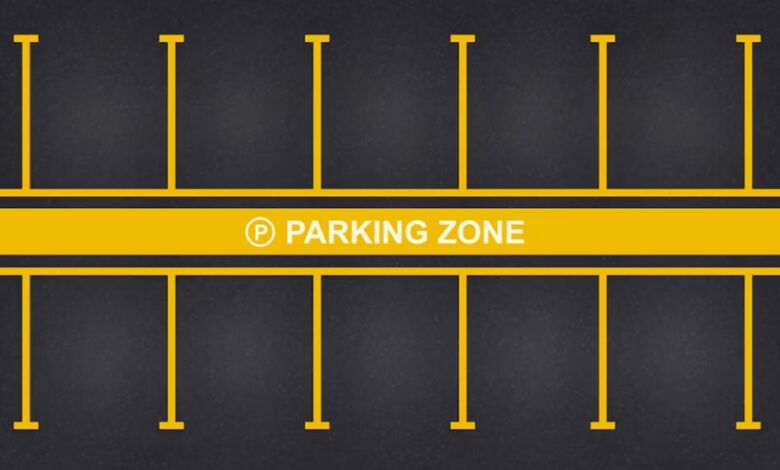The Essential Guide to Parking Lot Line Striping: Enhancing Safety and Curb Appeal

Parking lots are more than just spaces to leave your vehicle; they are often the first impression a visitor has of your business or facility. A well-maintained parking lot not only ensures the safety of pedestrians and drivers but also enhances the overall curb appeal of your property. One crucial aspect of parking lot maintenance is line striping. This process might seem straightforward, but it plays a vital role in organizing traffic flow, maximizing space, and ensuring safety. In this guide, we’ll explore the importance of parking lot line striping, the benefits it offers, and best practices for achieving optimal results.
Why Parking Lot Line Striping Matters
Parking lot line striping involves the application of paint to create clear and defined lines that designate parking spaces, directional arrows, pedestrian walkways, and other essential markings. The purpose of line striping extends beyond aesthetics; it’s a critical component of safety and organization.
- Safety: Clear and visible lines guide drivers and pedestrians, reducing the risk of accidents and ensuring that everyone knows where they should be. For instance, designated pedestrian crosswalks help prevent collisions between vehicles and foot traffic, while arrows indicating traffic flow reduce confusion and potential accidents.
- Maximized Space: A well-striped parking lot can accommodate more vehicles by efficiently utilizing available space. Properly spaced lines ensure that vehicles are parked in an organized manner, reducing the likelihood of cars being parked too close to each other or taking up multiple spaces.
- Compliance: Parking lot line striping is also essential for compliance with local regulations and the Americans with Disabilities Act (ADA). ADA-compliant parking spaces and access routes must be clearly marked to ensure accessibility for individuals with disabilities.
- Curb Appeal: The appearance of your parking lot reflects your business. Fresh, clean lines give a well-maintained and professional look, enhancing the curb appeal of your property and leaving a positive impression on customers and visitors.
The Benefits of Regular Line Striping
Maintaining the line striping in your parking lot isn’t a one-time task; it requires regular upkeep to ensure that the lines remain visible and effective. Here are some key benefits of regular parking lot line striping:
- Enhanced Visibility: Over time, exposure to the elements, vehicle traffic, and natural wear and tear can cause parking lot lines to fade. Regular re-striping ensures that lines remain bright and visible, especially in low-light conditions or during inclement weather.
- Increased Safety: As lines fade, the risk of accidents increases. Regular maintenance reduces the chances of vehicles encroaching into adjacent spaces, pedestrians straying from designated walkways, and drivers ignoring directional arrows.
- Extended Pavement Life: Parking lot line striping can also help protect your pavement. By keeping vehicles within designated areas, you can reduce the strain on certain parts of your lot, which can extend the lifespan of your pavement and reduce the need for costly repairs.
- Improved Customer Experience: A well-maintained parking lot shows that you care about the safety and convenience of your customers. This attention to detail can enhance customer satisfaction and loyalty.
Best Practices for Parking Lot Line Striping
To achieve the best results, parking lot line striping should be approached with careful planning and execution. Here are some best practices to keep in mind:
- Preparation: Before applying new paint, it’s crucial to prepare the surface properly. This includes cleaning the pavement to remove dirt, debris, and oil stains. If the pavement is damaged or cracked, it’s important to repair it before striping to ensure a smooth and even surface.
- Choose the Right Paint: The type of paint you use for parking lot line striping can make a significant difference in durability and visibility. Water-based acrylic paints are commonly used because they dry quickly and are environmentally friendly. Reflective paint can also be used to enhance visibility at night.
- Follow Local Regulations: Ensure that your line striping meets local codes and regulations, especially regarding ADA compliance. This includes marking accessible parking spaces, van-accessible spaces, and providing clear signage.
- Consider Traffic Flow: Plan your striping layout to optimize traffic flow and minimize congestion. This includes marking entrance and exit points, directional arrows, and ensuring that there is enough space for vehicles to maneuver safely.
- Hire a Professional: While it may be tempting to tackle parking lot line striping as a DIY project, hiring a professional ensures that the job is done correctly and efficiently. Professionals have the experience, equipment, and knowledge to deliver high-quality results that meet all safety and regulatory requirements.
Conclusion
Parking lot line striping is an essential aspect of property maintenance that enhances both safety and curb appeal. Regular maintenance of your parking lot lines not only improves the overall appearance of your property but also ensures that it remains safe and functional for both drivers and pedestrians. By following best practices and investing in professional line striping services, you can create a well-organized, compliant, and visually appealing parking lot that leaves a lasting positive impression on everyone who visits your property.

